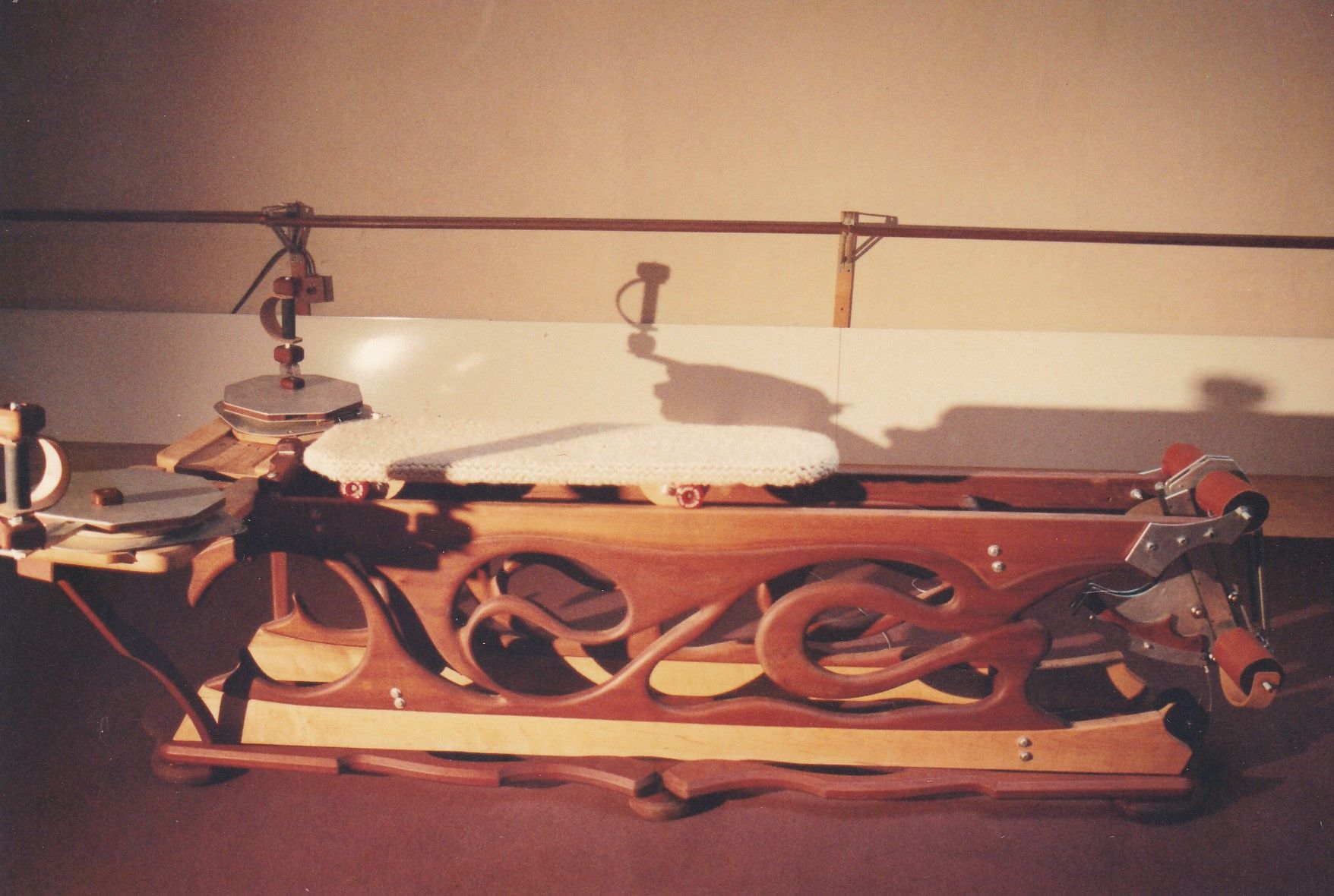History of the GYROTONIC® Equipment with Creator Juliu Horvath
Blog Content Featured Interviews // December 04, 2020
Have you ever wondered about the origins of the GYROTONIC® Equipment and how it came to be? The Gyrotonic Media team connected with Juliu over a zoom call to hear his story about the origins of the equipment. Read our highlights below, and watch the full video to hear the story from Juliu.
The Sparks that Started It All
It all began in the 1980’s. Juliu was in St. Thomas where he had formalized and created Yoga for Dancers, which eventually became the GYROKINESIS® method. While he wasn’t intentionally creating equipment during the St. Thomas years, the first spark that would eventually ignite the equipment idea happened — he just didn’t know it yet.
In St. Thomas, Juliu was connected with a woman who had undergone shoulder surgery. The prescribed therapy from doctors was simply squeezing a ball. Juliu developed a few exercises he thought would better help her: first, he had her walk her fingers up and down the wall, and then sideways. It then occurred to him that she needed circular movement, so he got the idea to put a nail into the wall and attach a string to the nail so that she could make small symmetrical circles, and then big circles, increasing the circle size larger and larger, making her movements larger. Next, he had her walk her fingers up and down the wall with both hands so that both hands were working parallel, and circular. These exercises made her movements precise — something that would become very important in later years as Juliu began creating the equipment.
The Magical Moment: From Trash to Treasure
Several years later, Juliu had moved back to New York City from St. Thomas and had opened White Cloud Studio, where he began teaching Yoga for Dancers. Juliu was grounded in movement — aside from creating Yoga for Dancers, he had been a gymnast, a swimmer, and a ballet dancer in earlier years.
One day, he happened to find two discarded barstools on the street. He started to consider what he could use them for, and immediately, as he began moving the barstool seats around, immediately figure 8’s were born. He then began wondering how to take these ideas and transfer the learnings into a machine…and then he remembered the strings from St. Thomas.
He started thinking about how he could put the two stools in between a door frame for his hands, or on the floor to be used by his legs, or how the whole thing could come together to be one piece. He started imagining all of the possibilities, and after a few months he created an idea. A short time later, he went to Canal Street in search of salvaged or discarded parts and pieces from this and that to build his first piece of equipment. Once he’d started building and seeing what movements were possible and how the equipment could support that movement, it struck him that he needed a jumping board. He worked mainly with dancers in those days and for a dancer, jumping is the most important element. Juliu figured out how to put a platform that rolled back and forth on skate wheels and against the wall to push away, then added some springs to pull him back, creating a jumping scenario.
He also wanted a way to exercise the legs that didn’t make for short, bulky legs like traditional machines found in a gym, but rather allow for full extension of movement for long and lean legs. This first leg extension unit was made completely of things he’d found on the street — nothing was purchased.
Eventually, these three elements came together to create Juliu’s first patents — the Jumping Stretching Board, Leg Extension Unit, and the Gyrotoner. After numerous variations and 30-40 iterations this equipment became what it is today.
The Pulley Tower is Born
Once Juliu had created the first pieces of equipment, he was inspired to continue to create. Not from a place of creating just to create, but rather as a means to provide solutions for the needs he had identified.
Juliu had the idea to put rings up on the wall, but wondered how people could move with the rings if their strength wasn’t great. He had the idea for the rings to move up and down, so he built a 4×4 against the wall and the floor and put two wheels on the top with an added string for a pulley-like action, imitating the exercises he would have done with the rings pulling back-and-forth. But with twisting and pulling, when he pulled too quickly, the weights began jumping and would fall. This inspired him to create a transition with a triple loop to make the weight move more slowly when he moved fast, allowing for a shorter range of strings to make long movements. Before long, he put it all together and the Pulley Tower was born.
There’s also beauty in the details that was very much on purpose. The Pulley Tower has proportions like a human body. The middle is the spine, the two moving elements and cables represent the arms, and the legs are the support, representing human legs. The curvatures were intentional and built to be beautiful.
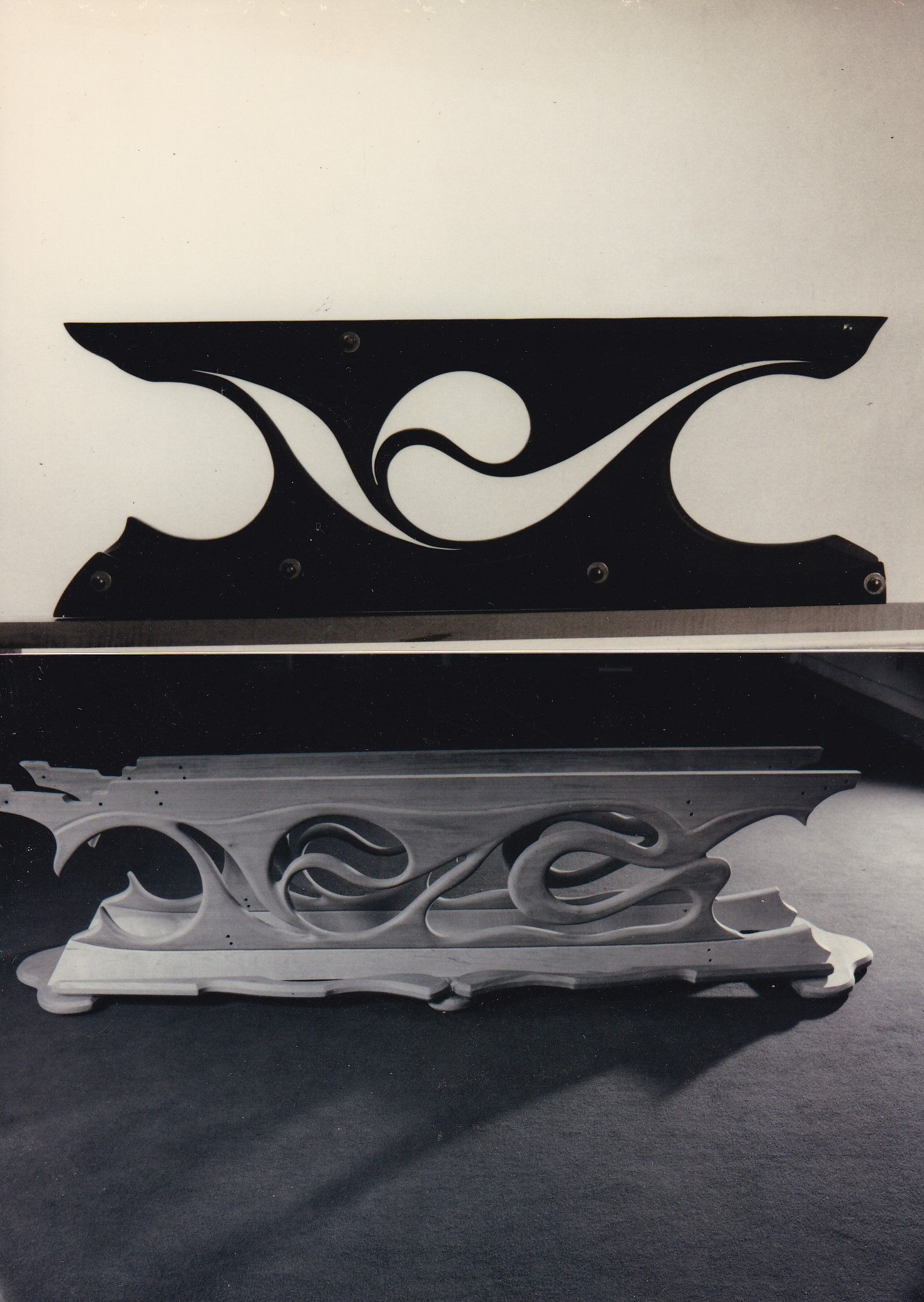
Building the Equipment by Hand
It may be a surprise to some, considering the ingenuity Juliu had in creating equipment, that he had no formal training in engineering or building. When he began building he only had a jig saw, rasp (or wood file), and sandpaper. Quickly, after experimenting and learning from his work, he became really handy and began to expand the tools he used.
“Somehow my hands understood something and followed my brains, and my brains understood something as well.”
Juliu credits all of his experiences in swimming, gymnastics, ballet, and creation of The Gyrotonic and Gyrokinesis methods as the catalyst for creating the Gyrotonic equipment — his deep experiences with movement orientation and understanding the body, where it needs and wants to move — this is how it became the Gyrotonic Expansion System. In other words, the equipment was built to facilitate the movement he was experiencing in his body.
Through the years, Juliu was building equipment completely by hand —over 400 machines — each piece and part by hand. In the beginning, he had two helpers in his workshop that assisted in sanding and putting boxes together, cutting out pieces of equipment. It should be mentioned that this workshop was also Juliu’s living quarters — full of dust and mice, large enough only for building and sleeping as he couldn’t afford to have both a living and a working space.
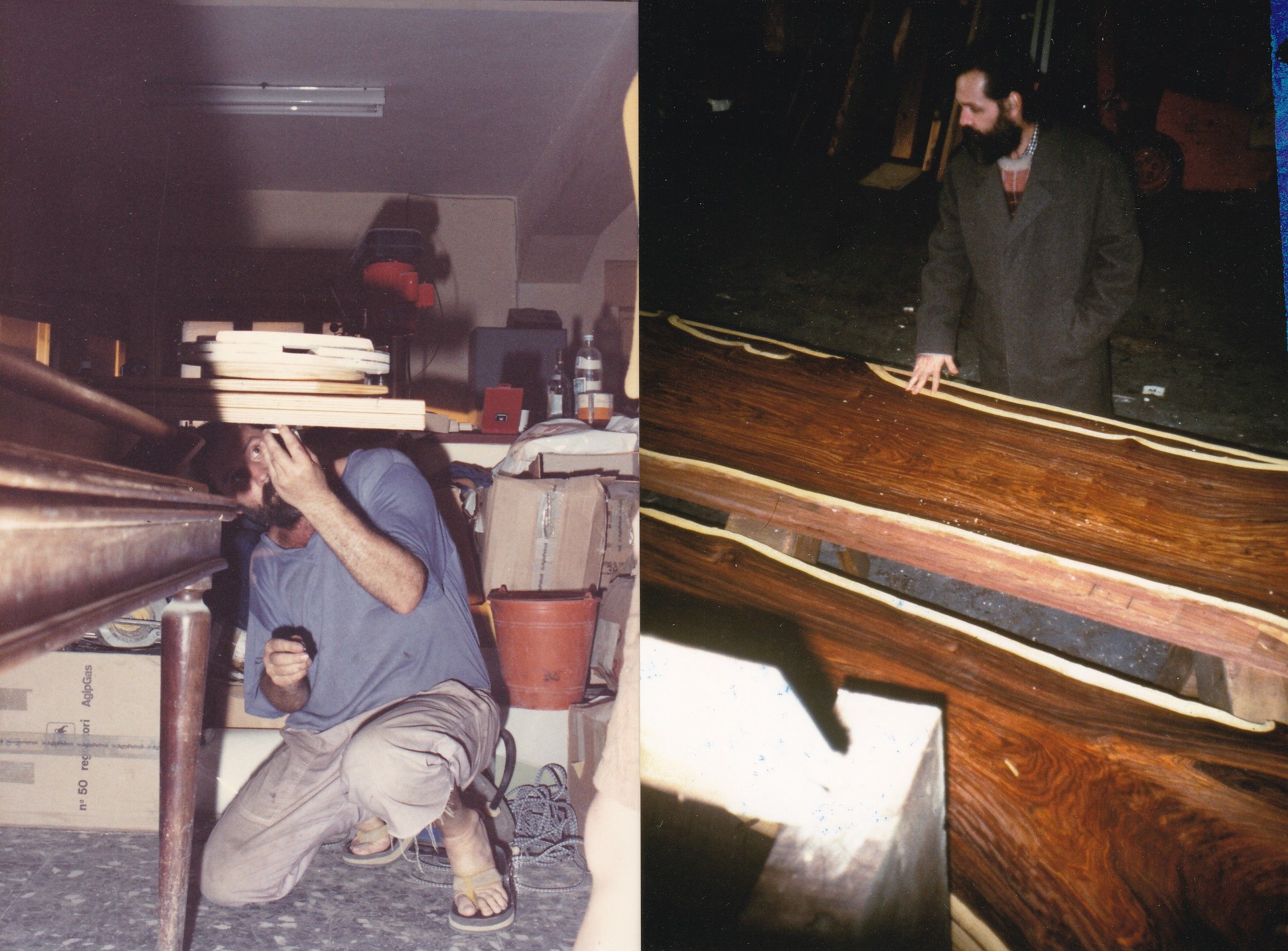
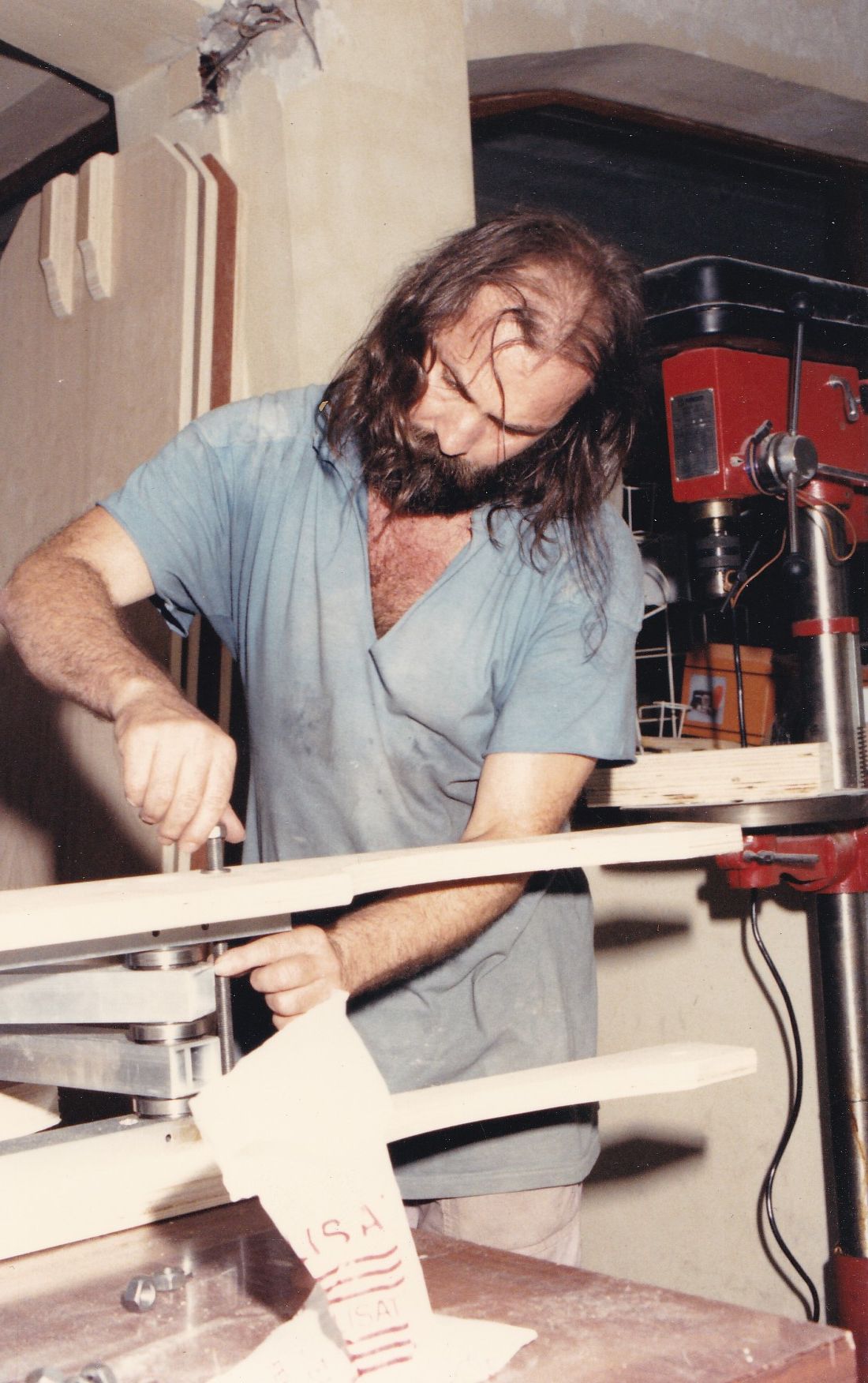
Many Hands Made Light Work
These first helpers were brothers from Poland, and their father worked in the building where Juliu’s workshop was located. They did not speak English, so they started communicating with hands and feet and through grimacing, but according to Juliu, it worked really well. They helped out for about 3-4 years before returning to Poland.
Additionally, a number of students/dancers helped Juliu in the workshop, trading Gyrotonic sessions for help in the workshop. It was important to him that those who practiced the Gyrotonic Method understood how to work with the wood as a way to create awareness — could they feel the blemishes under the sandpaper? He wanted them to work with the body, movements that were smooth and long. To Juliu, learning how to work with the body on the wood meant the students would learn how to work their bodies and gain sensitivity when working with others to notice things like limitations in someone’s movements and why it’s happening.
In many ways, he was teaching Gyrotonic through teaching his students about sanding wood, painting, and the movements they needed to use to be most effective. He wanted them to see what went into the equipment he was manufacturing. Interestingly enough, many of these first students who helped in the workshop are still around today, actively teaching as Gyrotonic Master Trainers.
In the late 90s, when the demand for the equipment outgrew what Juliu could manufacture on his own, he found a manufacturing partner to hand off these duties. After 10 years of no days off, building equipment, teaching classes, and running a studio, Juliu was ready to redesign the ways in which he worked.
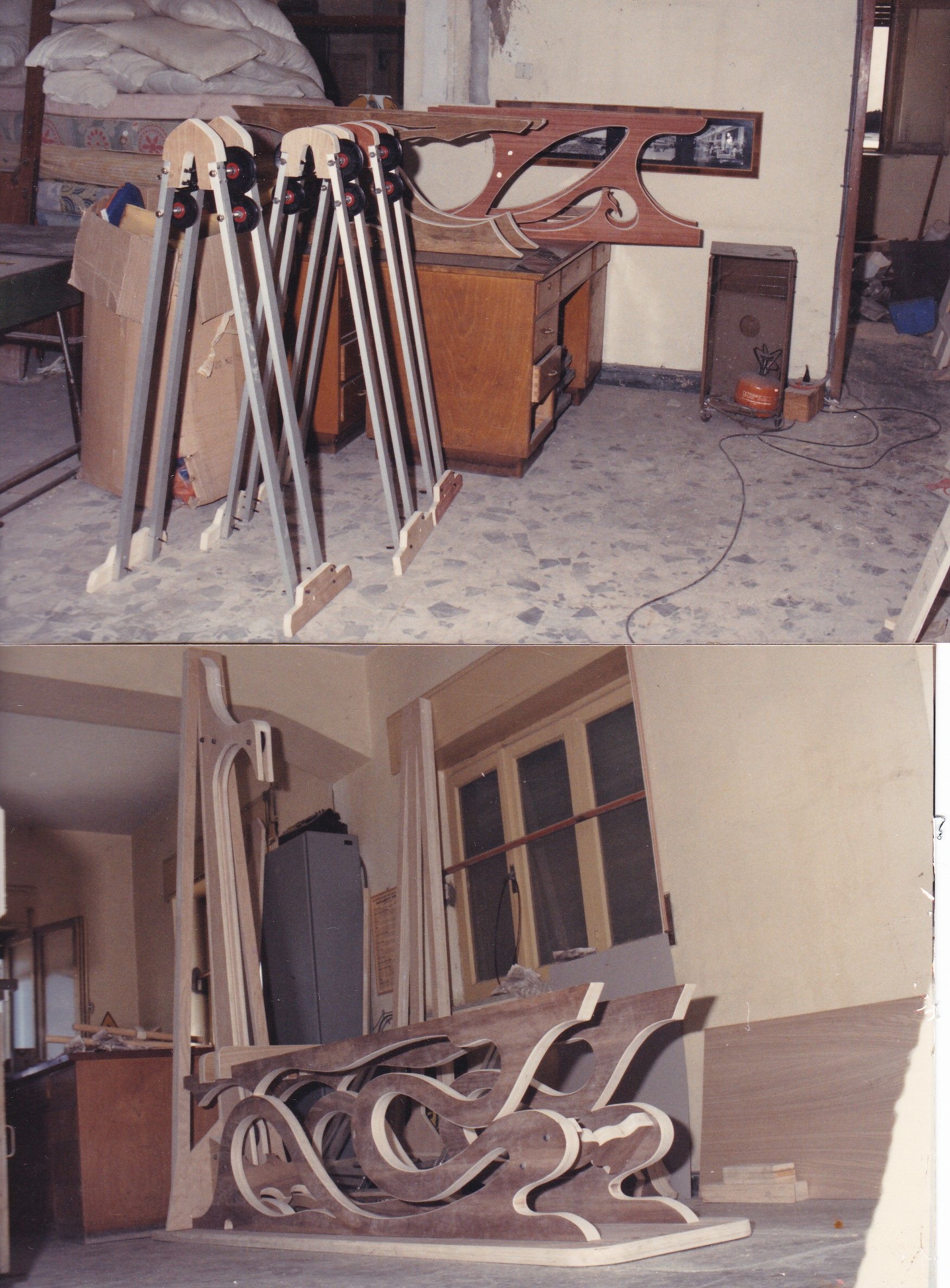
Adapting the Methods to Non-Dancers
Originally, the entire Gyrotonic Expansion System was created for dancers. Eventually, word spread of the benefits and non-dancers started coming to Juliu’s studio. He began to modify the exercises for their needs. Then, those with injuries began to come to him, so he modified the system for them.
He always began with understanding what it is that each individual wanted to obtain, be it strength, flexibility, agility, or something else. Then, he could tell them how much time they needed to achieve those desired outcomes according to what he saw in their bodies and movement, and the client could then determine if they wanted to put that much time and effort into it. Those who agreed to do the work got good results and the methods began to grow outside of the dancer population.
A large contributor to this work growing in popularity around the world, is that the Gyrotonic equipment can adjust to any person’s needs, making the Gyrotonic Method truly for every body and every ability.
“If you can look up and if you can look down, that is the beginning of an arch and curl. Start with what is available and move from there”
Equipment takes the Gyrotonic Methods to a New Depth
Many have often remarked that the use of equipment has taken their work to a new depth. Juliu agrees, stating that when people started working with equipment, they understood the movements better because the equipment guides you.
“For instance, the circles with the handle — so equal that it creates an equal ripple back into the body. If you are free-hand and circle is not equal, it goes back into your body. In a perfect circle, there is no chaos, so perfection starts rippling back into the body”.
Everything has an inside and an outside. The outside movement creates an inside affect.

